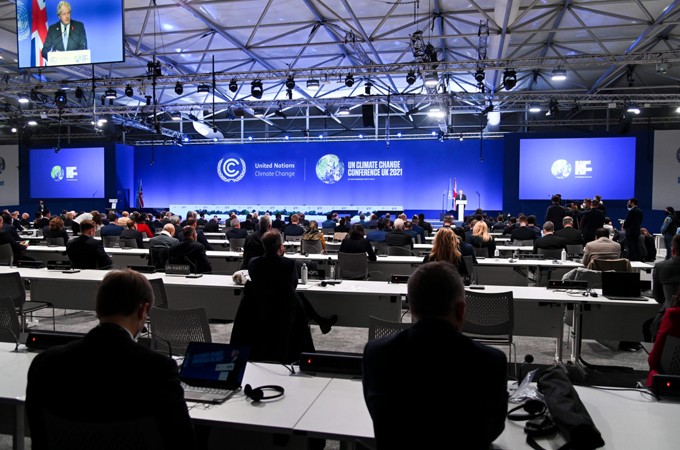
Managing climate change is the greatest challenge of our time, and the 26th UN Conference of the Parties in Glasgow, Scotland, better known as COP26, represents a milestone in the world’s efforts to take concerted action.
Historically, the travel and tourism industry has been responsible for leaving behind a significantly large carbon footprint, necessitating that companies within the industry improve their decarbonization efforts. Prior to the Covid-19 pandemic, travel and tourism accounted for 8 per cent of the world’s total greenhouse gas emissions.
Flights contribute significantly to carbon dioxide emissions and global warming, producing greenhouse gases from burning fuel. Because a huge amount of fuel is deployed during the take-off and landing of a plane, emissions per kilometre travelled are significantly worse than any other form of transportation, though this varies significantly depending on size, occupancy levels, and efficiency of the aircraft. Private jets, however, are known to produce considerably more emissions per passenger than commercial flights.
While the policy work on carbon emissions continues, many senior executives of travel and tourism businesses in the UAE will raise the question, “What do we do after COP26?”
The first thing they will have to do is recognise that with all the attention on climate change this year, things are speeding up in some key areas.
• Regulations. Carbon-taxation and emissions-trading schemes will expand, and the price of carbon will probably rise. Governments will also promise more subsides to spur change, such as initiatives designed to reduce the cost of green hydrogen.
• Financial disclosure. Companies will face more requirements to report on their climate risks, through a set of common reporting standards and climate-change disclosures, for example.
• Science-based targets. More companies will set ambitious decarbonization targets and sign onto initiatives to track these goals and will aim to include Scope 3 emissions in their plans.
• Scrutiny from investors. Sustainability, and climate change in particular, will become even more important for investment decisions.
• Customer expectations. Pressure from customers will lead more companies to look beyond their own operations and across their supply chains and use of their products.
Most importantly, the focus is going to shift from setting targets to delivering results. Until now, executives may have been rewarded just for stating goals; from here on, they will need to show real reductions. Here are four concrete things executives in travel and tourism corporations can do.
1. Make carbon transition a pillar of strategy. Too often, sustainability and carbon transition come as afterthoughts, but they should be baked into the strategy practice. The risks and opportunities of climate change should shape decisions about new products and how to improve operations.
2. Get more bang for your net-zero buck. Companies are pushing their carbon transitions as rigorously as any other business initiatives, which means improving efficiency while reducing cost. It is also about finding opportunities to monetize investments in sustainable technologies.
3. Embed carbon transition into the fabric of the business. Even the best plans will fall flat without the right supporting practices. Pricing, incentives, and tracking are three practices that help carbon transitions stay on track.
• Pricing. More and more companies price carbon internally, like any other cost of doing business.
• Incentives. Linking compensation incentives to carbon-reduction efforts keeps them on the agenda.
• Tracking. New software systems extract data from enterprise resource planning and other corporate systems, then calculate the precise carbon footprint and issue progress reports.
4. Avoid the hourglass effect. In many companies, top management and new employees are enthusiastic about sustainability, while middle management is left to solve the revenue, cost, and safety implications. As many have little or no experience managing carbon reduction, support can be offered by educating everyone about carbon reduction in the industry and clarifying the rules for trade-offs.
* De Waele is a managing partner with Bain & Company Middle East, and Lichtenau is a partner with Bain & Company London